Facebook offers a variety of audience targeting options for advertisers. However, choosing the right targeting method can make a big difference in the success of your campaigns. Two of the most popular targeting options are Lookalike and Broad targeting. And naturally, the question arises: Broad or Lookalike audience targeting?
While Lookalikes have been the preferred choice for many businesses in the past, the reality is that Broad targeting is now the better choice.
So, we’ve analyzed massive datasets to bring you the latest insights on what works best for businesses. With that in mind, we’re sure that this information will help you make informed decisions about your Facebook advertising strategy.
So let’s start: Broad or Lookalike audience?
Facebook Ads Lookalike Targeting
Lookalike targeting, or “Lookalike Audiences” is a type of audience targeting on Facebook that allows advertisers to reach people who are similar to their existing customers.
Advertisers create a Lookalike audience by uploading a list of their existing customers, leads, or website visitors.
Then, Facebook finds people who have similar interests and behaviors to the uploaded list. The Lookalike audience can be customized to target a specific percentage of the population that is most similar to your existing customers, with options ranging from 1% to 10% Lookalike audience.
Facebook Ads Broad Targeting
Facebook Ads broad targeting, often referred to as “Broad Audiences,” is a targeting option that allows advertisers to reach a wide and diverse audience without specifying specific demographics, interests, or behaviors. Instead, it relies on Facebook’s algorithm to determine who sees the ads.
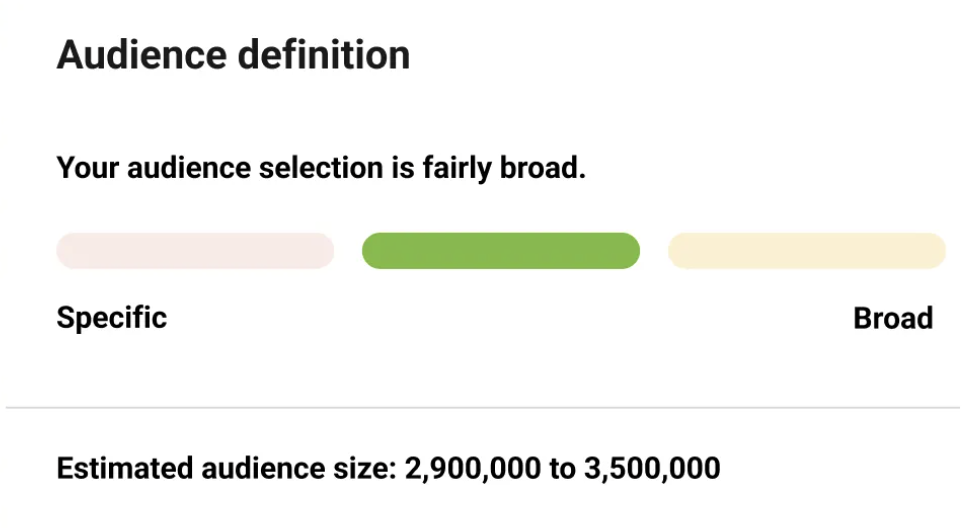
With Broad targeting, you have more control over who sees your ads and can reach a wider audience than with Lookalike targeting. We prefer broad targeting to be as broad as possible – putting only country limitations.
Historical Context: The Rise and Fall of Lookalike Targeting
In the past, Lookalike targeting was considered the best option for Facebook advertisers. But with changes to the Facebook algorithm and a focus on privacy and data protection, Broad targeting has emerged as the better choice for many businesses.
While Lookalike targeting can still be a valuable tool for some businesses, the reality is that Broad targeting offers increased control, improved performance, and better results.
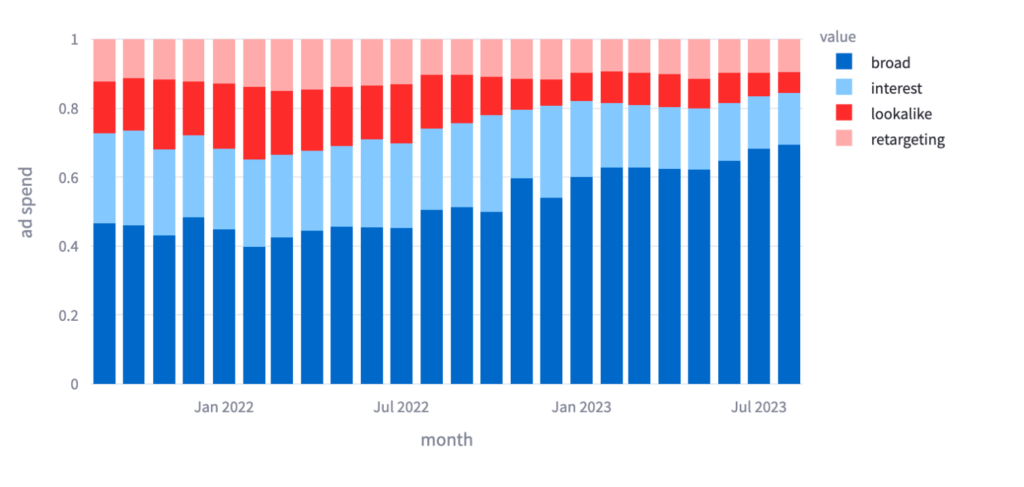
Broad or Lookalike? Key metrics analysis
When it comes to choosing between Lookalike and Broad targeting, the answer is clear. If you want to maximize your return on ad spend (ROAS), you should be running Broad targeting. Our analysis shows that on average, Broad targeting has a higher ROAS (113%) than Lookalike targeting (76%), with comparable CTR (around 1%).
Lookalikes have a higher average CPM (45% higher) which negatively impacts overall ROAS and decreases results, making Broad targeting the more effective option for most businesses.
So, if you’re looking to achieve the best results for your Facebook advertising campaigns, forget about Lookalikes and start using Broad targeting!
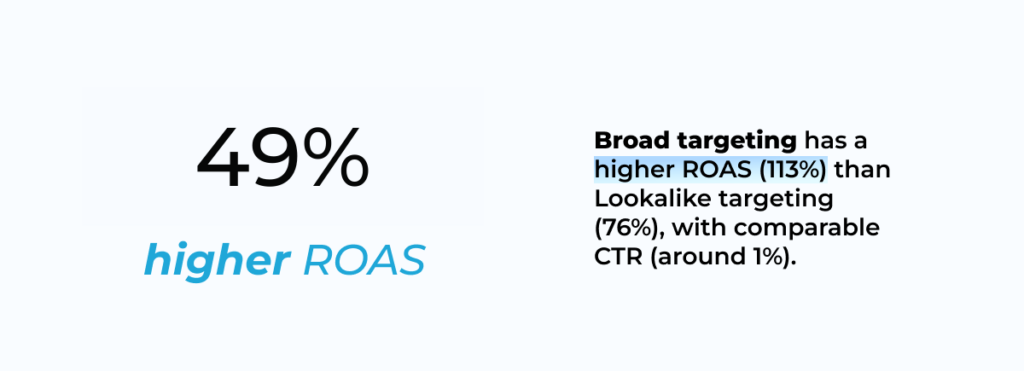
Do Lookalike audiences cost more?
On average, Lookalike audiences cost more than broad targeting. Lookalikes tend to have a higher CPM (45% higher) compared to Broad targeting, which can increase the cost of your campaigns.
Are Lookalike audiences cheaper?
It depends on how we define “cheap.” In the case of high CTR (which is not probable) on your Lookalike audience, you may get a lower cost per click.
However, since Lookalikes target more narrowly, CPM will always be higher, and on average, ROAS will be lower. As a result, you will pay more to acquire a customer.
All in all, Lookalike audiences are more likely to be an “expensive” targeting option compared to broad targeting.
Lookalike Best Practices
If you’re set on using Lookalike targeting, here are some best practices to help you get the most out of your campaigns: use a high-quality source list, start with a 1% Lookalike audience, and monitor and optimize regularly.
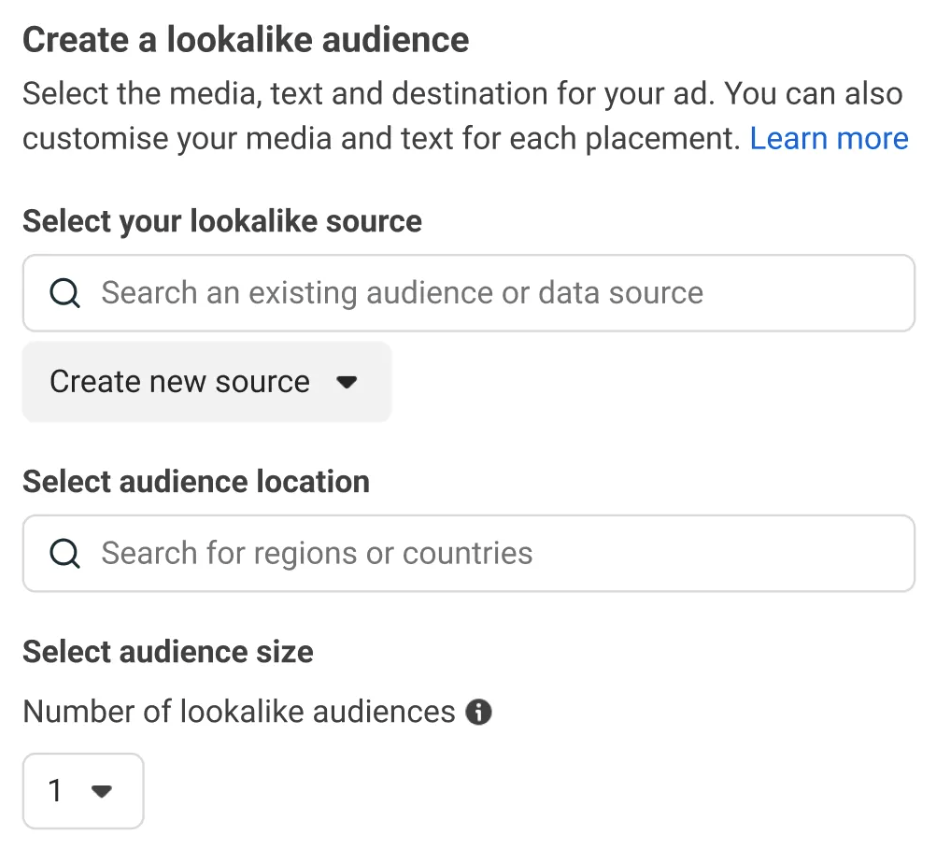
First, your Lookalike audience is only as good as the source list you use to create it.
Make sure to use a high-quality list of your best customers or leads. Don’t create lookalikes of your website traffic – since around 55% of your visitors bounce, you’ll create completely irrelevant
Lookalikes of people who bounced from your website.
Second, it’s always a good idea to start small and test different sizes of Lookalike audiences to see which works best for your business.
Start with a 1% Lookalike audience, which is the audience that is 1% most similar to your source list. If that one doesn’t work, 5% or 10% probably won’t work either.
And the last one, like any other advertising campaign, it’s important to continually monitor and optimize your Lookalike campaigns to achieve the best results. Keep an eye on your performance metrics, adjust your targeting as needed, and always be looking for ways to improve.
The minimum number of people needed for Lookalikes
The minimum number of people you need for a Lookalike audience is 100. However, the size of your source list can greatly impact the quality of your Lookalike audience.
Based on our experience, a source list between 5,000 and 20,000 works best. A source list of fewer than 5,000 people may be too narrow and biased towards just a few hundred customers.
On the other hand, a source list of more than 20,000 people may be too broad and not capture the true value of your audience.
In conclusion, aim for a source list size of between 5,000 and 20,000 people when creating your Lookalike audience.
Time to populate Lookalike audience
It typically takes 24-48 hours for a Lookalike audience to populate. But, if your source list is large it can take longer.
When to Use Lookalike Targeting
While Broad targeting is the more effective audience type for most businesses, there may be certain situations where Lookalike targeting makes more sense. Here are some circumstances when it might be appropriate to use Lookalike targeting:
- Specific target audience: If you have a very specific target audience and are looking to reach individuals who are similar to your best customers, leads, or top 5% of website visitors, Lookalike targeting can be a useful tool.
- Limited budget: If you have a limited budget and need to focus your advertising spend on a more narrowly defined audience, Lookalike targeting can help you do so.
Broad Targeting Best Practices
As we mentioned before, Broad targeting is the best way to get your ads shown to more people. But, how to do it?
Well, with Broad targeting you’re giving Meta’s AI more opportunities to show your ad to people most likely to engage with your business. Meta (Facebook) will automatically optimize your ads to reach the most relevant people possible.
Meta's tip for using Broad targeting
Some of Meta’s tips for using Broad targeting are:
- Set your audience to reach at least two million people
- Only use age, gender and location targeting
- Turn on Advantage detailed targeting
- Consolidate similar ad sets to avoid audience overlap
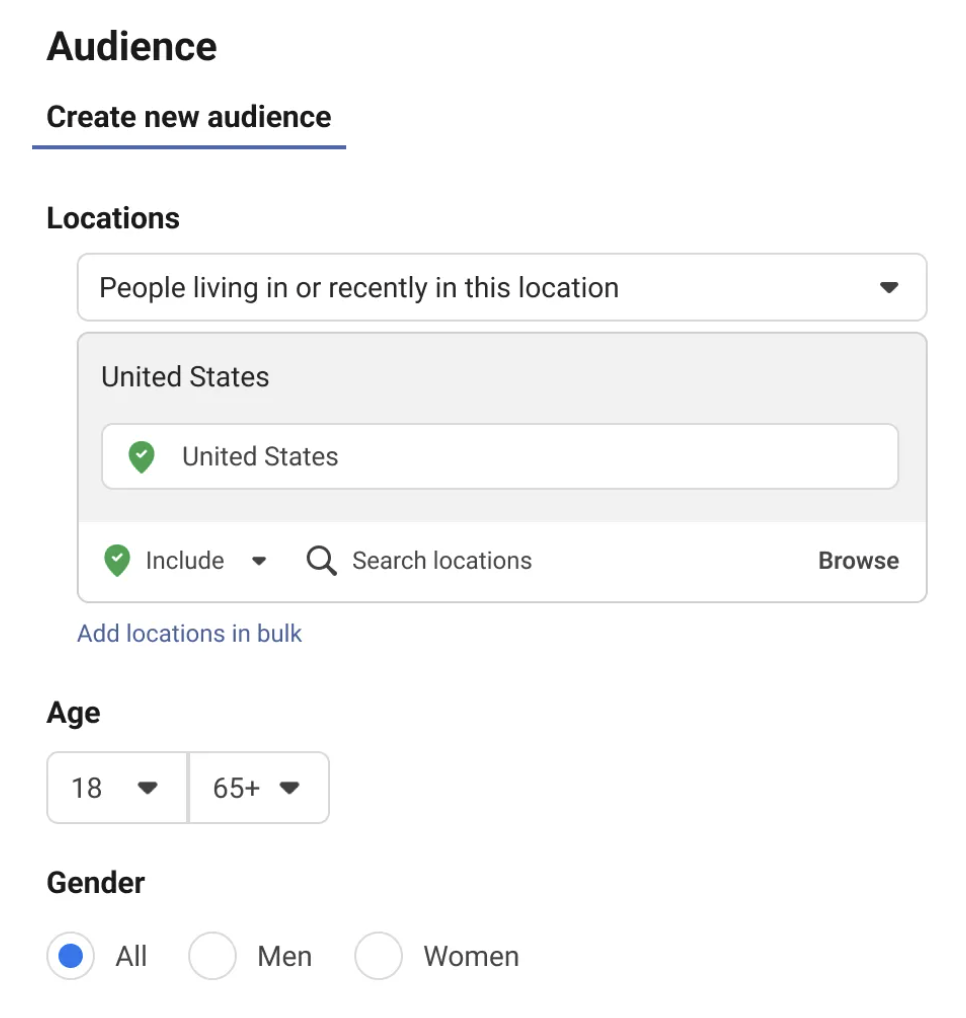
Well, with some of these tips we agree, with some don’t. Meta says that with Broad targeting they automatically optimize your ads to reach the best possible audience for your business. So, why give the algorithm the limitations?
We recommend only to choose the country you want to target.
Regarding age and gender, it depends on your business. If you have a product that is only for female or male audiences then we suggest putting gender limitations.
However, if you have a mass-market product, targeting both genders will give you a lower CPM.
What works best for our customers, is that you have two campaigns. The first campaign is prospecting, where you reaching to people that aren’t familiar with your brand. And here you want to exclude an audience that was on your site or purchased your product.
This you can do with creating a custom audience.
The second campaign is retargeting, where you target audiences that are familiar with your brand. However, here you want to exclude people who already purchased your product. Why? Because there are cheaper ways to keep them engaging with your brand like email campaigns.
With this approach, you’ll avoid audience overlap.
Summing Up: Broad or Lookalike Audience?
In conclusion, while Lookalike targeting can be useful for businesses with a specific target audience or a limited budget, Broad targeting is the more effective choice for most businesses.




